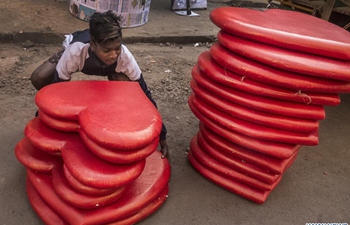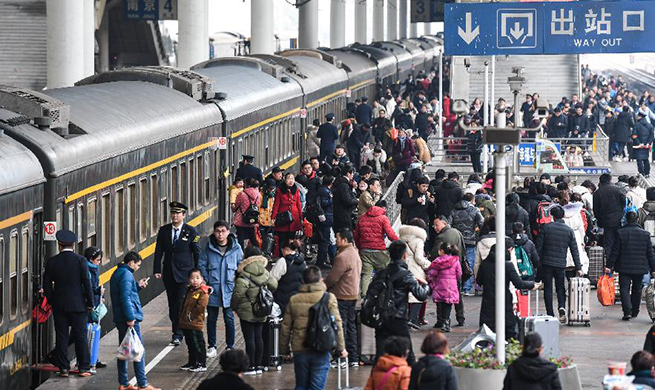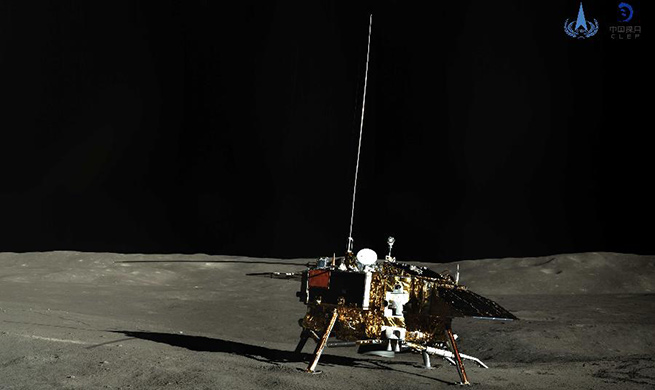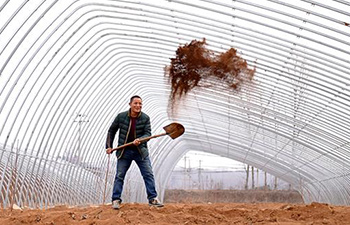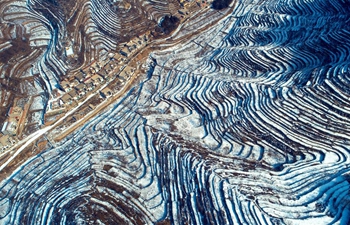TOKYO, Feb. 13 (Xinhua) -- Tokyo Electric Power Company Holdings Inc. (TEPCO) operator of the stricken Fukushima Daiichi nuclear power plant on Wednesday attempted to make direct contact with melted fuel at the bottom of one of the crippled reactors by using a device that can grip onto objects.
TEPCO said the device will be inserted into the primary containment vessel to survey the No. 2 reactor at the disaster-hit plant, in the hope that it will be able to find out whether the melted fuel accumulating at the bottom of the reactor can be extracted or not.
The information from the latest probe will purportedly provide the utility with vital information regarding decommissioning methods and protocols, which are as yet extremely unclear, for the No. 1 to 3 reactors that underwent core meltdowns in the March 2011 nuclear crisis.
However, TEPCO said that the device it has deployed, with the capacity to grip objects weighing up to 2 kilograms and carry a camera and radiation detector, will not extract a sample of nuclear deposits until the second half of next fiscal year.
If the fuel deposits cannot be picked up, the utility said it may have to develop yet another new piece of technology that is capable of cutting the deposits into smaller pieces to be extracted, and in doing so, adding to the decommissioning timeline and to the woes of the local and international community still majorly concerned about how and when the plant will become fully secured.
Past attempts to conduct surveys in the crippled reactors have involved TEPCO sending self-propelled robots to explore the inside of the reactors and capture and send information about the melted nuclear fuel debris so that the utility can decide how to remove it.
An attempt to send a shape-shifting, camera-equipped robot into the reactor was cancelled, however, as camera images outside the containment vessel used to monitor the robot could not be seen on the control room's screen.
Prior to this, a similar failed attempt to retrieve data from inside the damaged No. 2 reactor occurred due to the robot malfunctioning, possibly due to extremely high levels of radiation.
The continued failures by TEPCO to retrieve the necessary data on the high levels of radiation, the temperature, and the amount and locations of melted fuel and nuclear debris from the damaged reactors, are complicating plans to decommission the plant.
TEPCO was the owner and operator of the Daiichi facility in Fukushima Prefecture at the time of the nuclear disaster which has been continuously unfolding since March. 11, 2011.
The disaster involved a massive quake-triggered tsunami knocking out the plant's key cooling functions leading to multiple meltdowns of the facility's reactors.
The crisis has yet to be fully brought under control in the almost eight years since the incident, with no clear blueprint for the technological processes necessary for the plant to be effectively decommissioned and the "all-clear" given.
The Japanese government has said it will likely continue its effective state ownership of TEPCO, as the expected costs for the increasingly complicated decommissioning of the plant and the paying of compensation to the victims continue to escalate.
As many as 40,000 people fled Fukushima after the meltdowns at the Daiichi plant and thousands still remain displaced.
TEPCO and the government have said in their most recent analysis of the situation that the exact plan as to when and where to begin the decommissioning process has yet to be decided.
The decision on which reactor will be the first to have spent nuclear fuel removed and the technology to achieve this will be decided within fiscal 2019, they said.
The removal of the spent fuel, assuming suitable technology can be developed, is expected to start in 2021, the government and the utility have tentatively decided.
The ongoing disaster at Fukushima remains the world's worst nuclear crisis since the 1986 Chernobyl accident.





